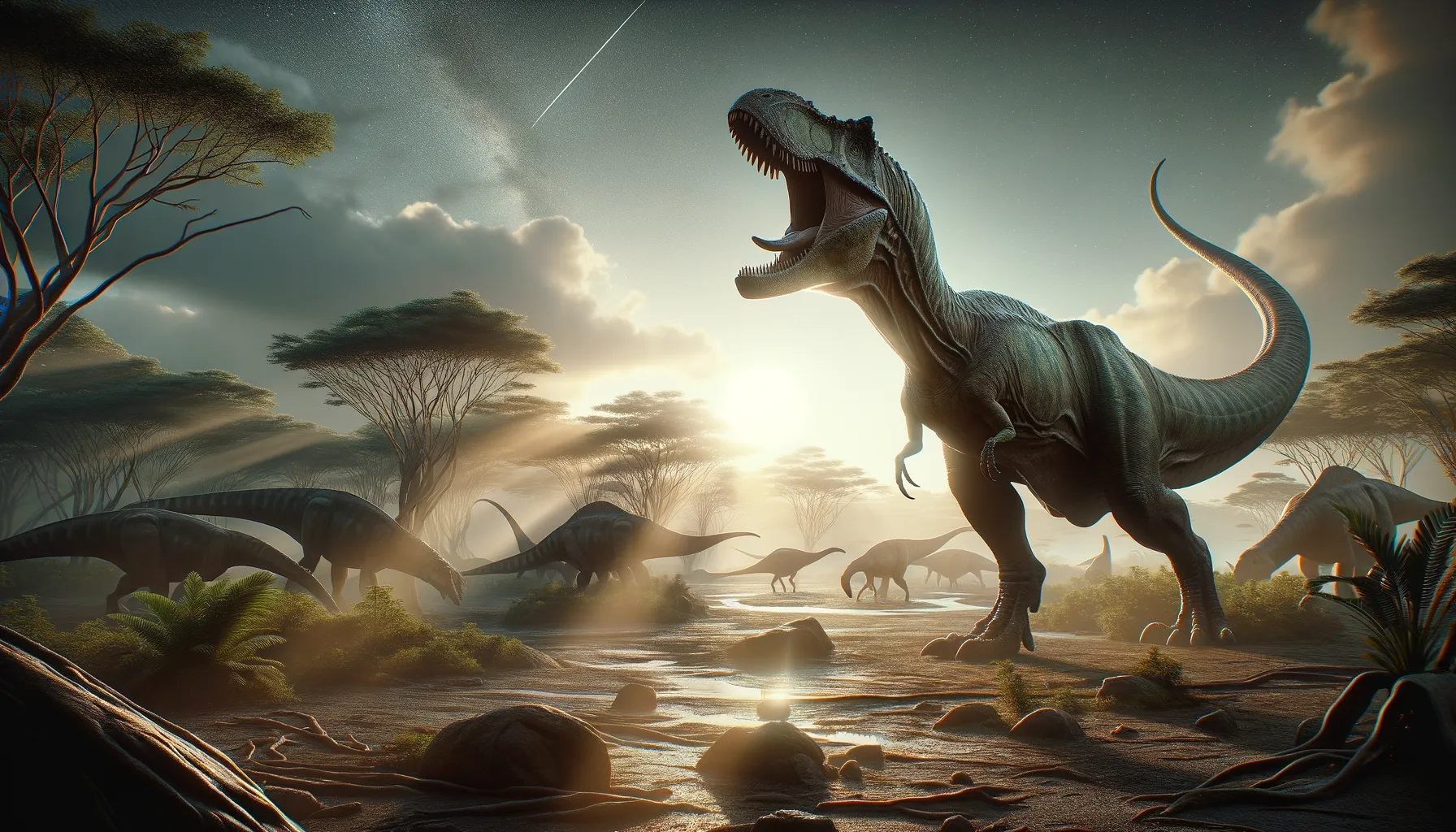
Vectensia
A mighty giant from a bygone era.
Period
Cretaceous
Length
Measured roughly 9 meters in length.
Height
Stood about 3 meters tall.
Weight
Weighed approximately 1,200 to 1,500 kg.
This dinosaur roamed the earth in the Early Cretaceous period. Known for its large size and herbivorous diet, it was a distinctive feature of its habitat. Vectensia's fossil remains provide crucial insights into the diversity of dinosaur life present on the Isle of Wight during this era, highlighting its adaptability to ecological niches.
Diet
Vectensia primarily fed on low-lying vegetation, utilizing its long neck to graze on various plant species. Its diet consisted mainly of ferns, cycads, and other ancient flora.
Hunting
Being a herbivore, Vectensia did not hunt but served as prey for the larger carnivorous dinosaurs of its time. It relied on its size as a deterrent against predators.
Environmental challenges
Vectensia faced challenges from climatic changes that could affect the vegetation it relied on for food. Periodic droughts would have posed significant risks, leading to food scarcity. Additionally, competition with other herbivorous dinosaurs might have been fierce, requiring it to adapt to changing conditions to survive. As it lived alongside numerous predators, maintaining constant vigilance against ambushes was crucial.
Speed
Likely moved at moderate speeds due to its size.
Lifespan
Estimated to be around 30 to 40 years.
First discovery
First discovered on the Isle of Wight in England.
Fun Facts
- Vectensia is a small dinosaur that lived during the Early Cretaceous period, approximately 125 million years ago.
- This dinosaur was discovered on the Isle of Wight, which is often referred to as the 'Dinosaur Capital' of Britain due to its rich fossil sites.
- Vectensia was about the size of a large dog, making it relatively small compared to some other dinosaurs of its time.
- Despite its small size, Vectensia was a ferocious carnivore, likely preying on insects and small vertebrates.
- Scientists believe Vectensia had a fine layer of feathers, similar to some modern birds, though it couldn't fly.
- The name 'Vectensia' comes from the Roman name for the Isle of Wight, which highlights its geographical connection.
- Fossil finds of Vectensia have helped paleontologists understand more about the diversity and evolution of early theropods in Europe.
Growth and Development
Vectensia hatched from eggs and grew rapidly during its early years to reach a size that provided protection against predators. Juveniles were likely more vulnerable and relied on herd behavior for safety. As they matured, their growth rates decreased, but they continued gaining weight and size, making them formidable adults.
Habitat
Vectensia inhabited lush river valleys and forests, which provided ample food and shelter. These regions had a moist climate, allowing for dense vegetation to flourish, which was ideal for herbivores. Its habitat supported a diversity of plant and animal life, offering a dynamic ecosystem.
Interaction with other species
Vectensia coexisted with a variety of herbivorous dinosaurs, competing for similar food resources. It also lived alongside several carnivorous species, which saw it as potential prey. Mutual vigilance and possibly herd-like formations would have been strategies to reduce predation risks. Its presence influenced the plant life, as its feeding habits could have shaped the local flora.
Natural lifespan
Typically, Vectensia could live around 30 to 40 years in the wild.
Reproduction
Vectensia reproduced by laying eggs, which it buried to protect them from predators. The eggs were incubated by the warmth of the earth and possibly parental guarding. Hatchlings were initially vulnerable and relied on herd dynamics for protection as they grew. As common among large herbivores, Vectensia likely laid numerous eggs to ensure that at least some offspring survived to adulthood.
Social behaviour
Vectensia likely traveled in groups, offering protection against predators. Such social structures would provide security for younger individuals and facilitate cooperative foraging. Communication among group members was crucial, using visual signals and possibly vocalizations. Social interactions were essential, especially during migrations or when crossing territories.
Fossil locations
Fossil remains have been predominantly discovered on the Isle of Wight, offering a wealth of information about Vectensia's anatomy and lifestyle. These discoveries indicate that the region was rich in diversity during the Cretaceous, serving as a vital area for various dinosaur species. The fossils have provided valuable insights into the ecosystem dynamics and the adaptive strategies employed by herbivorous dinosaurs in that period.
